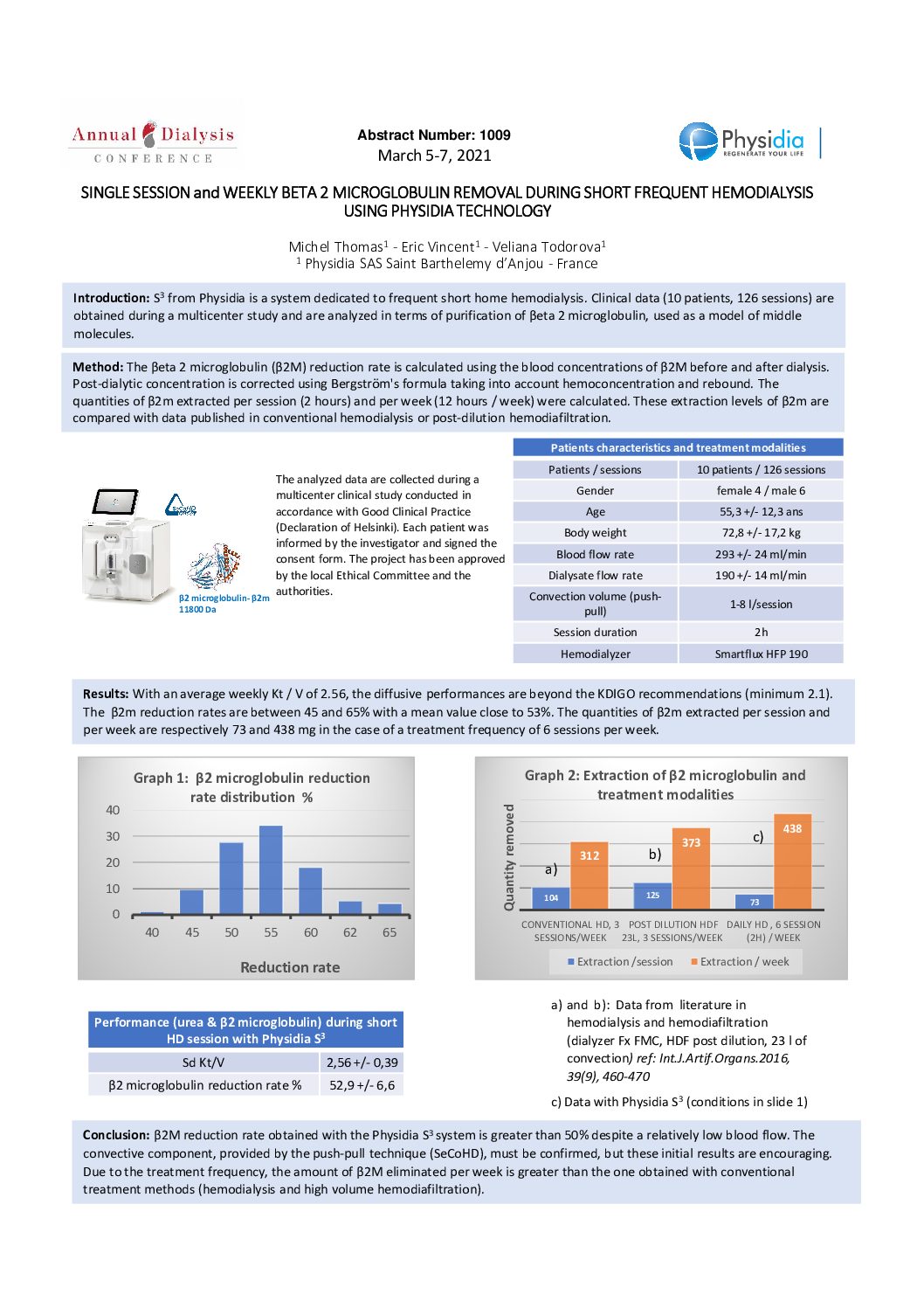SINGLE SESSION and WEEKLY BETA 2 MICROGLOBULIN REMOVAL DURING SHORT FREQUENT HEMODIALYSIS USING PHYSIDIA TECHNOLOGY
Physidia publication at the 2021 ADC conference
β2M removal – a study on efficiency of middle molecules elimination with short frequent hemodialysis
The ADC – Annual Dialysis Conference – was held this year virtually from the 5th to 7th of March. Physidia presented a scientific study on the removal of middle molecules using the S3 home hemodialysis monitor. The S3 from Physidia is a system dedicated to frequent short home hemodialysis. The system was used for a study of removal of middle molecules in frequent home hemodialysis ( 5 – 6 sessions per week) with dialysis sessions of 2 hours. Clinical data (10 patients, 126 sessions) were obtained during a multicenter study and were analyzed in terms of purification of βeta 2 microglobulin, used as a model of middle molecules.
Method of the study: The βeta-2 microglobulin (β2M) reduction rate is calculated using the blood concentrations of β2M before and after dialysis. Post-dialytic concentration is corrected using Bergstrom’s formula taking into account hemoconcentration and rebound. The quantities of β2m extracted per session (2 hours) and per week (12 hours / week) were calculated. These extraction levels of β2m are compared with data published in conventional hemodialysis or post-dilution hemodiafiltration. The analyzed data are collected during a multicenter clinical study conducted in accordance with Good Clinical Practice (Declaration of Helsinki).
Results: With an average weekly Kt / V of 2.56, the diffusive performances are beyond the KDIGO recommendations (minimum 2.1). The β2m reduction rates are between 45 and 65% with a mean value close to 53%. The quantities of β2m extracted per session and per week are respectively 73 and 438 mg in the case of a treatment frequency of 6 sessions per week.
Conclusion: β2M reduction rate obtained with the Physidia S3 system is greater than 50% despite a relatively low blood flow. The convective component, provided by the push-pull technique (SeCoHD), must be confirmed, but these initial results are encouraging. Due to the treatment frequency, the amount of β2M eliminated per week is greater than the one obtained with conventional treatment methods (hemodialysis and high volume hemodiafiltration).

